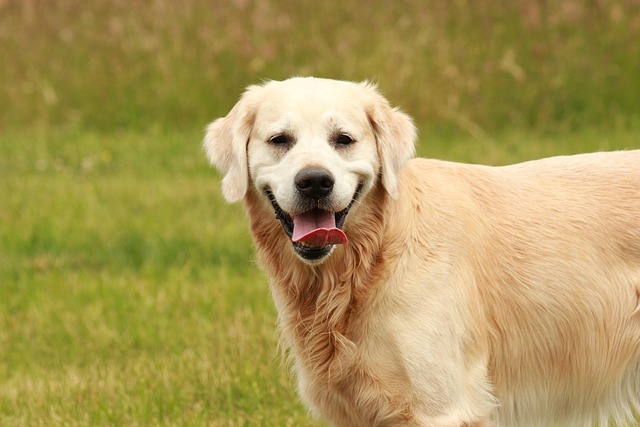
What is glaucoma in a dog?
You might notice your dog squinting more at mealtime or avoiding bright sunlight—these small changes could be early signs of a serious eye condition.
I stood in my friend Mia’s Seattle apartment kitchen last weekend, watching her stare at a pile of carrots and broccoli—her 6-month-old Golden Retriever pup, Luna, circling her feet, tail thumping. “I want to add veggies to her kibble, but I’m scared I’ll mess up. Do I cook them? Cut them tiny? How to prepare vegetables for dogs without making her sick or bored?” Mia asked, holding a whole carrot (Luna lunged, nearly knocking it out of her hand). If you’re a new U.S. dog owner eager to boost your pup’s diet with veggies, the answer is simple: focus on safety, digestibility, and keeping it fun—no fancy tools or recipes required.
To understand why veggie prep matters for dogs, let’s break down their biology. Unlike humans, dogs have shorter digestive tracts and fewer enzymes to break down raw, fibrous veggies. Mia’s vet, Dr. Lee, explained that hard, uncut veggies are a choking hazard (especially for puppies like Luna), while raw cruciferous veggies (like broccoli) can cause gas if not lightly cooked. Worse, some veggies (onions, garlic, raw potatoes) are toxic—so prep starts with picking the right ones. Scolding a dog for snatching veggies (like Mia almost did when Luna grabbed a carrot peel) violates U.S. animal welfare standards; she wasn’t misbehaving—she’s curious, and prep time can double as positive training, not frustration.
Here’s how to prepare vegetables for dogs, step by step, using Mia’s routine that made Luna beg for more: First, pick vet-approved veggies (start with “safe bets”). Stick to carrots, sweet potatoes, broccoli, green beans, and pumpkin—these are easy to digest and low-risk. Mia avoids anything in the onion family and never uses canned veggies (they’re loaded with salt). She keeps a “dog veggie bin” in her fridge (separate from human food) to avoid mix-ups—critical in small apartment kitchens. Second, clean thoroughly (no shortcuts). She rinses veggies under cold water, scrubbing carrots with a produce brush to remove dirt and pesticides. For store-bought veggies, she soaks them in a bowl of water with a splash of apple cider vinegar (5 minutes) to cut chemicals—then dries them to prevent sogginess. Third, cook (or not?)—match the veggie. Root veggies (carrots, sweet potatoes) need softening: Mia steams them for 5–7 minutes (boiling leaches nutrients) until they’re tender but not mushy. Broccoli gets a quick 2-minute steam (raw is too gassy). Green beans? She serves them raw—cut into 1-inch pieces for Luna’s size. Pumpkin (canned, unsweetened) is ready to go—no cooking needed. Fourth, cut for safety (size = breed matters). For Luna (25 pounds), Mia chops veggies into pea-sized pieces (small enough to swallow without chewing). For toy breeds, she mashes them into kibble; for large dogs, bite-sized chunks work. She uses these pieces as training treats: when Luna sits politely during prep, she gets a carrot piece—positive reinforcement that keeps her calm.

For apartment living, prep smart to save space and time: Mia steams veggies in a small electric steamer (no big pots!) and stores leftover cooked veggies in a sealed glass container in the fridge (good for 3–4 days). She freezes extra sweet potato cubes in a zip-top bag—pop one out to thaw for quick snacks. When walking Luna, she packs a small container of raw green bean pieces in her treat pouch—she rewards Luna for not jumping on neighbors (perfect for community etiquette) and always carries biodegradable poop bags (Seattle fines $175 for leaving messes, even after a veggie-fueled walk). Never skip vet checkups: Dr. Lee updated Luna’s rabies vaccine (mandatory nationwide) at her last visit and praised Mia’s veggie prep—vets love natural diet additions but can’t advise without proof of core shots. He also warned against overdoing it: veggies should make up 10% or less of Luna’s diet (too many replace nutrient-dense kibble).
Three days later, Mia texted me a video: Luna licking her bowl clean, kibble and steamed broccoli mixed together. How to prepare vegetables for dogs? For Luna, it’s steamed, chopped, and full of praise. For your pup, it’s about choosing safe veggies, prepping them for their size, and turning prep time into bonding. Veggies aren’t just healthy—they’re a tasty way to make mealtime feel special, for both of you.

You might notice your dog squinting more at mealtime or avoiding bright sunlight—these small changes could be early signs of a serious eye condition.

Let’s set the scene: It’s a sweltering Phoenix afternoon—105°F outside—and you rushed your 2-year-old Lab mix, Cooper, on a quick walk to “get it over with.”

Let’s get real: You’re in your Miami apartment, watching your 3-year-old Corgi, Loki, struggle to climb the stairs to your second-floor unit.

Many dog owners brush off occasional scratching as just “dog behavior,” but persistent itching often signals something more—like a food allergy.

You might first notice your dog scratching more than usual—chewing at their paws until the fur looks thin, or rubbing their face against the couch nonstop.

Let’s be real: You’re standing in your Chicago apartment, watching your 3-year-old Beagle, Max, huff and puff just to climb onto the couch.